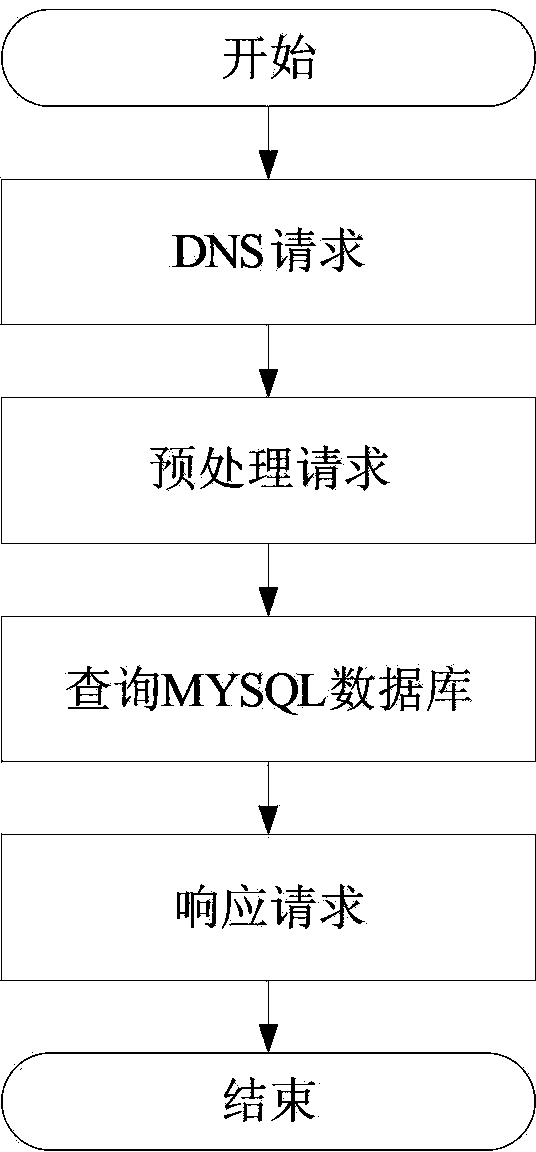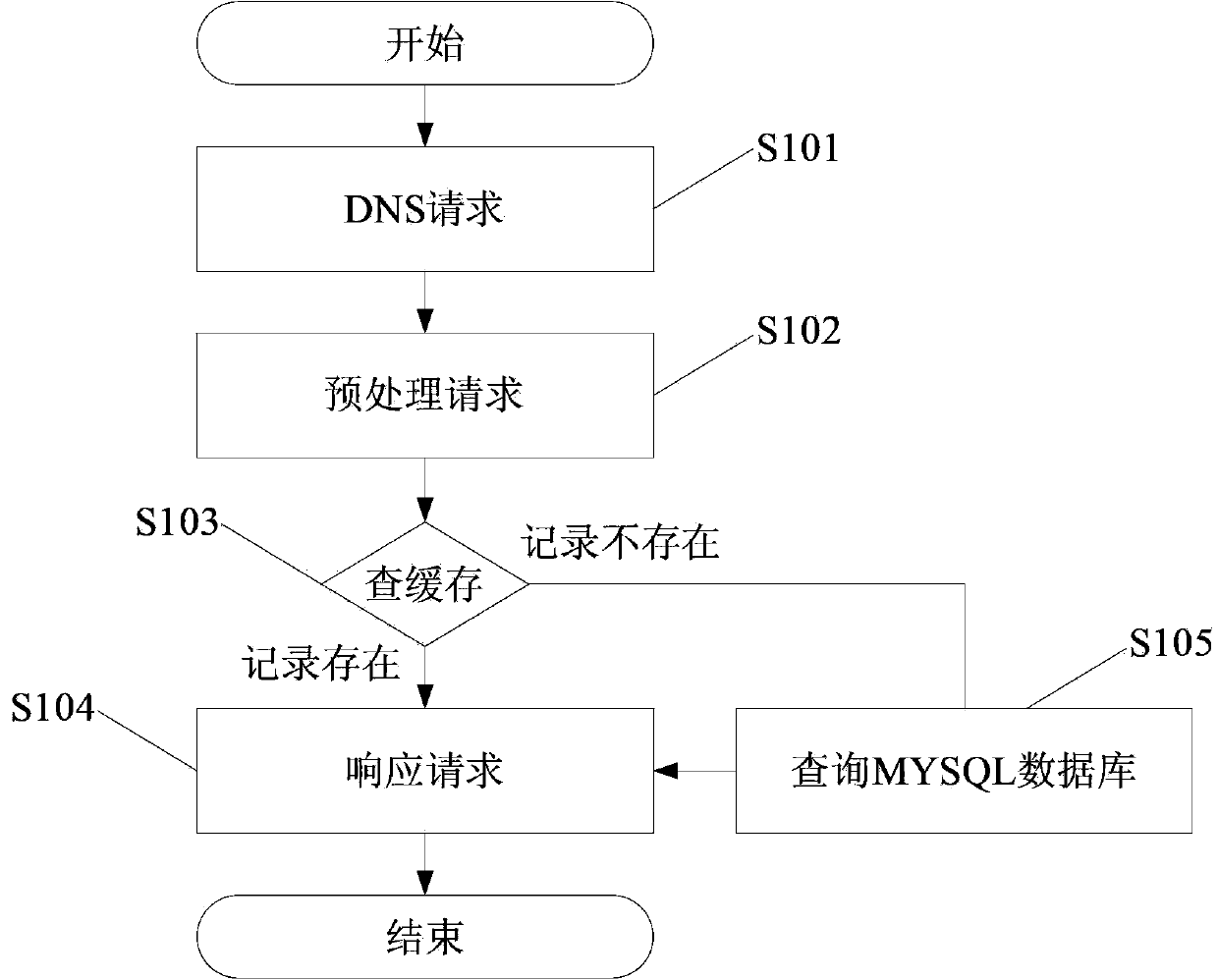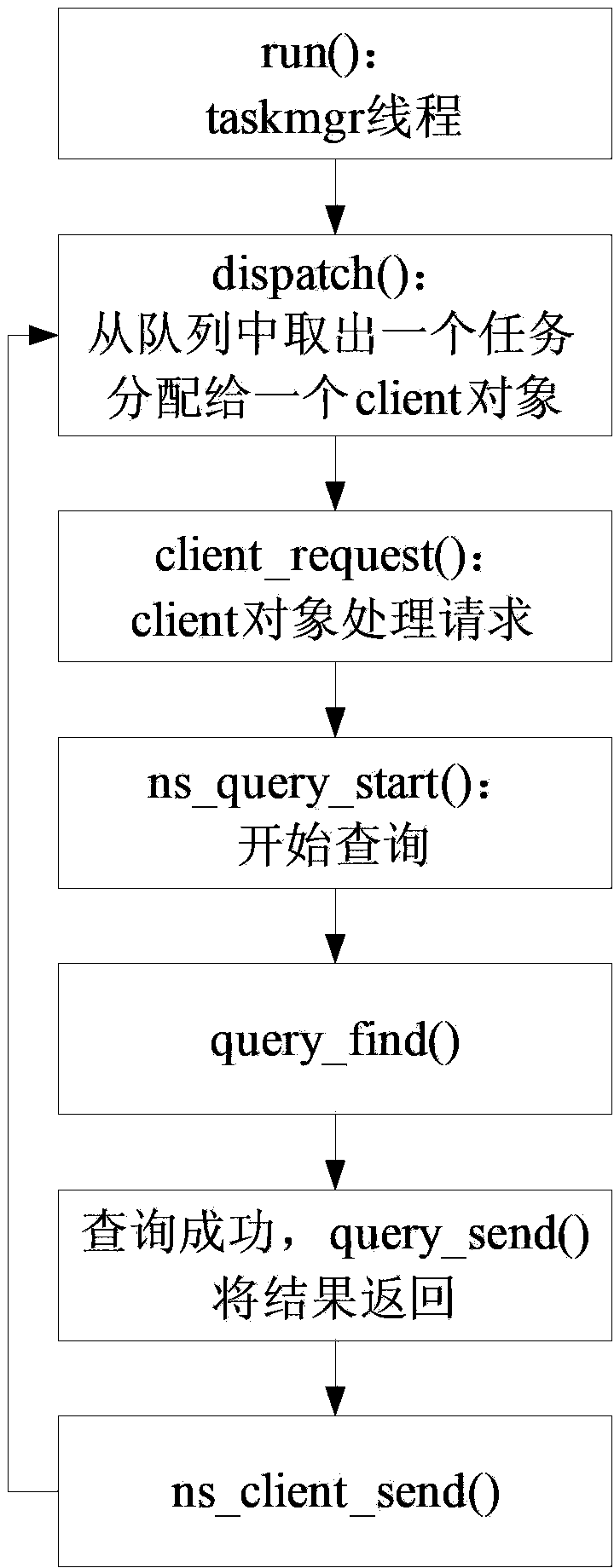Method for optimizing domain name system and optimized domain name system
A technology of domain name system and optimization method, which is applied in the field of optimized domain name system and its optimization, can solve problems such as low processing efficiency, and achieve the effects of improving utilization rate, query efficiency, and query rate
- Summary
- Abstract
- Description
- Claims
- Application Information
AI Technical Summary
Problems solved by technology
Method used
Image
Examples
Embodiment 1
[0031] Such as figure 2 Shown is the domain name system optimization method of an embodiment of the present application, including:
[0032] Request receiving step S101, the domain name server receives the domain name query request from the client;
[0033]Preprocessing request step S102, preprocessing the received domain name query request, can adopt common preprocessing methods, such as taking a task from the processing queue and assigning it to a processing object, and then processing by the processing object;
[0034] In the domain name query step, the domain name server searches in the local cache module to respond to the domain name query request, wherein the local cache module caches the domain name information. The record of domain name information, if there is this record, then continue to step S104, if this record does not exist, then perform step S105, that is, the domain name server searches the domain name information related to the domain name query request fro...
Embodiment 2
[0040] This embodiment adds whitelist filtering on the basis of Embodiment 1. The whitelist is composed of all domain names and host header information in the database, that is, the whitelist includes domain name whitelist and host header whitelist, and domain names not in the whitelist All are not supported. Through whitelist filtering, random domain name attacks can be mitigated to a certain extent. For details, please refer to Figure 5 with Image 6 .
[0041] Figure 5 Shown is a flow diagram of the domain name support sub-step, that is, the function query_getdb(), including the following steps:
[0042] First, obtain the memory object corresponding to the current processing thread (that is, a thread corresponds to a memory object). It should be noted that all places that require dynamic memory in this request are obtained through this memory object.
[0043] Then, execute the function dns_dlzfindzone() to find whether the database supports this domain name;
[0044]...
Embodiment 3
[0055] This embodiment is based on Embodiment 1 or Embodiment 2 by using multithreading, that is, the local cache module supports multithreading operation, and the domain name server implements domain name query by using multithreading. The role of multi-threading is to process multiple client queries at the same time, and each step of each client's query is fixed in the corresponding thread.
[0056] In general multi-thread optimization, such as Figure 7 As shown, BIND-DLZ shares a memory pool ns_g_mctx object among multiple threads, which is a global variable. Therefore, locks are required when allocating and releasing memory in each thread. Examples of functions that allocate and free memory are as follows:
[0057]
[0058] It can be seen from the function that allocating memory and releasing memory must go through the process of locking and unlocking, that is to say, when multiple taskmgr threads run concurrently, due to the locking operation in the thread, each thr...
PUM
 Login to View More
Login to View More Abstract
Description
Claims
Application Information
 Login to View More
Login to View More - R&D
- Intellectual Property
- Life Sciences
- Materials
- Tech Scout
- Unparalleled Data Quality
- Higher Quality Content
- 60% Fewer Hallucinations
Browse by: Latest US Patents, China's latest patents, Technical Efficacy Thesaurus, Application Domain, Technology Topic, Popular Technical Reports.
© 2025 PatSnap. All rights reserved.Legal|Privacy policy|Modern Slavery Act Transparency Statement|Sitemap|About US| Contact US: help@patsnap.com



